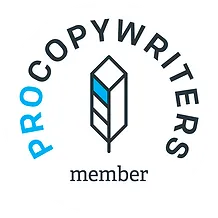It’s another of these nonsensical copywriting ‘rules’ – usually the product of:
- A copywriter who needed to find a topic for a blog post
- A client who trusted that blog post to be well-researched and informative
- An understandable desperation to make copywriting a one-size-fits-all science – something that’s easy to do and judge for quality
In reality, copywriting is a creative balancing act. The skill of using the most appropriate techniques for a given moment.
So, for the sake of balance, here’s when I think negativity is a positive for the task at hand.
1. When you want attention (which is always)
Death. Alone. Mistakes. Rainbows.
As a species, human beings are always prioritising. We don’t see things equally, think things equally, or read things equally.
In 2009, three researchers conducted a study where participants were exposed to a series of words. These results ‘conclusively established’ that we are more sensitive to negative words than positive words.
It’s not surprising. Human evolution has been consistently about avoiding harm and removing risk. When something bad is in front of us, we take note.
Ultimately, we don’t want these negative connotations too linger. As copywriters, we want to paint a positive picture that’s packed with benefits.
But, before that, we want attention. And that’s easier to get with negative sentiments or words than it is with an uncompromisingly positive approach.
2. Right before you try to change preconceptions
All copywriting is a conversation. So let’s start there, with some light role-play.
Let’s imagine you have a friend that hates Carly Rae Jepsen, but for some reason you’ve decided to still have this kind of influence in your life. You hear her new single and it’s exactly the kind of tune you think your friend would like.
How do you start that conversation?
“Listen, I know you hate Carly Rae Jepsen, but give me three minutes of your life and I’ll change that.”
Before you ask your friend to change their distasteful behaviour, you remind them that you understand. You empathise with what they think and believe, even if it’s wrong.
It’s there in any number of copywriting structures and formulas – perhaps most obviously in something like ‘Problem, Agitation, Solution’.
If you know the pain points, objections and preconceptions you’re dealing with, why wouldn’t you call them out and get them on the table?
In doing so, you build trust, empathy and goodwill. Then you have the time and space to change the perspective.
3. When you know your weaknesses
Finally, some negativity is a useful tactic when you know what’s wrong with your brand. Admitting some weakness can be a powerful way to build trust, even if you don’t go on to talk about how you can overcome it (although, if you do, great!).
In The Choice Factory, Richard Shotton describes research conducted by psychologist Elliot Aronson. One half of participants watched recorded video of an actor answering quiz questions accurately. The second watched the same video, but with the actor spilling his coffee afterwards.
Throughout, participants reported that the clumsy contestant was more likeable.
It’s a finding that feels risky for brands to put into practice. They strive for a world where nobody knows what’s wrong with them – even though, for the most part, people’s preconceptions are already well-embedded.
But the so-called Pratfall effect has already been put into practice – and worked well – time and time again. It’s why Avis were so happy to say they were number two. It’s why Volkswagen told the world their new car was so ugly. Because when the truth is plain to see, omitting it is nothing short of disrespectful.
Putting it into practice
The last thing I’d suggest is going through your next draft with a negative laser beam. This isn’t a one-size-fits-all technique any more than ‘always be positive’ is.
But I’m particularly fond of it because it’s worked so well for me.
Pre-2014, my website was performing on a very mediocre level. I had work, I had clients and I had a business. But I knew it was time to step up a level.
As you’d expect, I started with my copy.
It was here that I first put negativity into practice. My homepage is entirely built around the things that people don’t care about – including me – and, in turn, the things they do.
It’s a way to:
- Stand out and get attention from the first header
- Show that I know my audience
- Reflect the pain point of self-obsessed, too-creative-for-their-own-good freelance copywriters
- Start a conversation that feels trusting, upfront and direct – all typical of the way I speak, write and work
I still highlight benefits. I still provide tangible proof. But in reworking the page to lead with a negative, I found a more interesting way to say the same thing.
And isn’t that we’re always trying to do?
Thoughts? Tweet me @smcopywriter. Nothing negative please.
